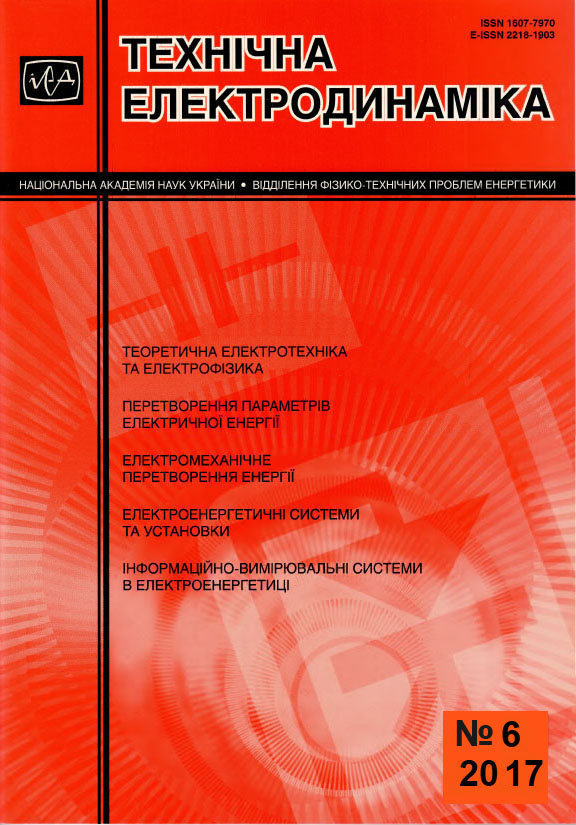Abstract
The paper investigates various controlling options for the selected resonant converter topology, which is optimized for capacitor charging systems. Several of the controlling algorithms were studied in depth, and one of them was practically verified. There are two major advantages about the system: full/partial soft-switching mode what allows to use higher switching without the system efficiency drop; controllable energy flow from the input to the output, without any additional sophisticated parts. References 6, figures 9.
References
Demirchyan K., Neyman L. Theoretical Foundations of Electrical Engineering. Vol. 2. – SPb.: Piter, 2006. – 576 p. (Rus)
Milyakh A.N., Volkov I.V. Stabilized current systems based on inductive-capacitive converters. − Kiev: Naukova Dumka, 1974. – 216 p. (Rus)
Pentegov I.V. Fundamentals of the charging circuits theory for capacitive energy storage devices. − Kiev: Naukova Dumka, 1982. – 420 p. (Rus)
Polishchuk Yu.A. To the study of charging systems of capacitive storage devices from a source of limited power / Ustroistva preobrazovatelnoi tekhniki, vypusk 1. − Kiev: Naukova Dumka, 1969. − Pp. 10-16. (Rus)
Rashid M.H. Power Electronics Handbook. − N.-Y.: Academic Press, 2002. − 895 p. 6. Shcherba A.A., Suprunovska N.I. Electric energy loss at energy exchange between capacitors as function of their initial voltages and capacitances ratio // Tekhnichna Elektrodynamika. – 2016. – No 3. – Pp. 9-11.

This work is licensed under a Creative Commons Attribution-NonCommercial-NoDerivatives 4.0 International License.
Copyright (c) 2022 Array






